Nose Surgery in Hua Hin
Search and Compare the Best Clinics and Doctors at the Lowest Prices for Nose Surgery in Hua Hin

Find the best clinics for Nose Surgery in Hua Hin
With Medijump you can browse 2 facilities offering Nose Surgery procedures in Hua Hin. The cheapest price available is $164 in Udon Thani
Nose Surgery in Thailand
Price: $ 164
Nose Surgery in Udon Thani
Price: $ 164
Nose Surgery in Nonthaburi
Price: $ 222
Poland offers the best prices Worldwide
Price: $ 101
From 95 verified reviews
Shakira Liverman, 27 November 2020
5 stars only for this hospital🤩 Had surgery and spend a week here. No hospital stay in pleasant, but staying here truly felt like a 5-star hotel experience! Staff are caring and compassionate. The doctors are skilled and knowledgeable. They treated me with respect.
Sanpaulo Hospital, located in Bor Fai, Hua Hin, Thailand offers patients Nose Surgery procedures among its total of 27 available procedures, across 5 different specialties. Currently, there's no pricing information for Nose Surgery procedures at Sanpaulo Hospital, as all prices are available on request only, whilst the national average price is approximately $6,394. There is currently a lack of information available on the specialists practicing at the Hospital, and they are not accredited by any recognized accreditations institutes
Compare Before & After Photos of _procedure_photos.phpNose Surgery
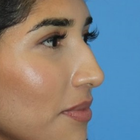
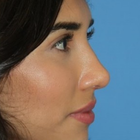
Full-side view
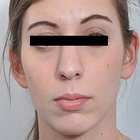

Front view
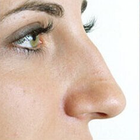
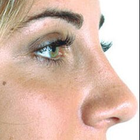
Full-side view
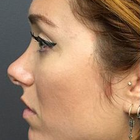
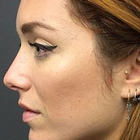
Full-side view
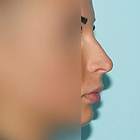
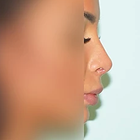
Full-side view

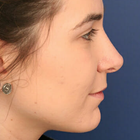
Full-side view
WHY US?
At Medijump, we're making medical easy. You can search, compare, discuss, and book your medical all in one place. We open the door to the best medical providers worldwide, saving you time and energy along the way, and it's all for FREE, no hidden fees, and no price markups guaranteed. So what are you waiting for?

Free

Best Price

Widest Selection

Risk-Free
What you need to know about Nose Surgery in Hua Hin
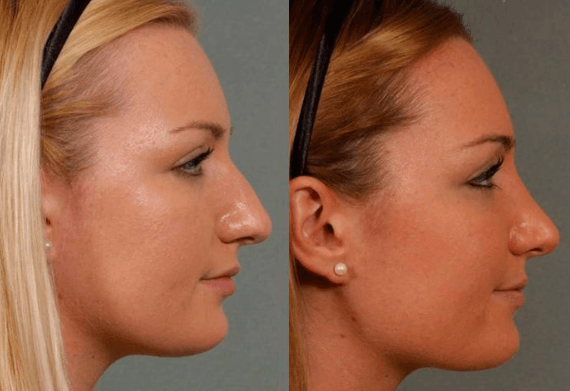
Commonly referred to as a Rhinoplasty, it is the medical term for reshaping of the nose or corrective surgery of the nose. It is one of the most common facial plastic surgeries (Facelift) procedures performed. Nose surgery can be performed to change the consequence of genetics, birth defect or nasal injury. It can be performed to enhance the appearance and/or to improve nasal breathing.
Surgery can be performed to correct nasal humps, the curvature of nose-bridge, nose tip irregularities, and asymmetry in the nostrils. The nasal appearance can be altered in various ways using intra-nasal chisels. Nose surgery procedures generally fall under three types: open rhinoplasty, closed rhinoplasty, and tip rhinoplasty. Rhinoplasty is normally performed under general anesthesia and will not leave any visible scars on the nose.
What does a Nose Surgery Procedure Involve?
Nose surgery is an individualized surgery. Before the surgery, you will need to discuss important factors with your surgeon to determine if it is suitable for you. Your surgeon will review your medical history, including your previous surgeries, medical conditions, and any medications you are taking. You will need to have a complete physical examination, such as blood tests. Your surgeon will also consider your other facial features, the skin on your nose, and what you would like to change or correct. Then, your surgeon will develop a customized plan for you. Two weeks before and after surgery, avoid any medications that contain aspirin or ibuprofen, such as Advil and Motrin IB because these medications can increase bleeding. You will need to also stop taking herbal remedies and over-the-counter supplements. If you are an active smoker, stop smoking because smoking can slow your healing process and increase the risk of getting an infection.
During the actual surgery, you will be given either local anesthesia or general anesthesia. The type of anesthesia depends on how complex the surgery is and what the surgeon would prefer to use. Then, the surgery will start by making incisions inside your nose or at the base of your nose between your nostrils. Your surgeon will reshape the inner bone and cartilage underneath your skin to make a more pleasing appearance.
There are several ways to change the shape of your nasal bones or cartilage, depending on your nose’s structure and how much needs to be removed or added. If only small changes are required, your surgeon may use cartilage taken from deeper inside your nose or your ear. However, for a much larger change, your surgeon may use cartilage from your rib, implants, or bone from other parts of your body. When the changes are finished, your surgeon will place the nose’s skin and tissue back. The incisions will be closed by stitches.
How Long Should I Stay in Hua Hin for a Nose Surgery Procedure?
If everything goes well, you can go back to your hotel on the same day once the effects of anesthesia wear off. However, you will need to stay in a recovery room for a few hours so the staff can monitor you. Some people may need to stay in hospital overnight. After you are discharged from the hospital, you will need to stay in Hua Hin for at least 10 to 14 days for initial recovery, follow-up checkups, and for the stitches to be removed.
What's the Recovery Time for Nose Surgery Procedures in Hua Hin?
The recovery period for nose surgery can be different from person to person. In general, 2 to 3 weeks is needed until you can get back to your full normal routine and 3 to 6 weeks until you can do any strenuous activity. However, you should be able to go back to work within a week, except if your job requires strenuous physical activity. You will feel gradually better each day in the first week. You will experience swelling, which can take six months to subside. The only people who will notice the swelling is you and your surgeon. Your final nose shape will be apparent after it is completely healed.
What sort of Aftercare is Required for Nose Surgery Procedures in Hua Hin?
After the surgery, you may need to wear a nasal splint for the first week. The splint is used to protect and support your nose. Your nose may be congested due to swelling or from the nasal splint. You need to rest in bed with your head raised higher than your chest to reduce bleeding and swelling. For a few days after the surgery, you may also experience slight bleeding and drainage of mucus. Your surgeon may place a “drip pad” under your nose to absorb drainage.
Your surgeon may ask you to avoid strenuous activity, take baths instead of showers, avoid blowing your nose, eat high-fiber foods to avoid constipation, not to do any facial expressions (smiling or laughing), not wearing pull clothing and wear button-downs instead.
For at least several weeks after the surgery, do not rest eyeglasses or sunglasses on your nose to prevent pressure. You should also wear SPF 30 sunscreen when you are outside because too much sun can cause permanent irregular discoloration to your nose. Do not put anything such as ice or cold packs on your nose even though it is swelling as the swelling will go away faster by limiting your dietary sodium.
What's the Success Rate of Nose Surgery Procedures in Hua Hin?
Nose surgery is known to have around 80% to 90% success rate. Nevertheless, just like any other surgery, it still has possible risks and complications. These risks are bleeding, infection, numbness, permanent nerve damage, and an adverse reaction to the anesthesia. You should call your surgeon immediately if you suspect any of the symptoms. Other possible risks are difficulty breathing through your nose, uneven-looking nose, persisting pain, swelling, and discoloration, scarring, septal perforation, and the need for a second or third surgery.
For an in-depth analysis of the closed rhinoplasty procedure with before and after images, watch this short video.
Are there Alternatives to Nose Surgery Procedures in Hua Hin?
If you do not want to undergo surgery, or if it is not suitable for you, you can get filler injections, such as Botox, Juvaderm, and Restylane. They can change the shape of your nose and only require a short visit to the doctor. This method is not painful and needs no incisions or stitches.
Whilst the information presented here has been accurately sourced and verified by a medical professional for its accuracy, it is still advised to consult with your doctor before pursuing a medical treatment at one of the listed medical providers
No Time?
Tell us what you're looking for and we'll reachout to the top clinics all at once
Enquire Now

Popular Procedures in Hua Hin
Prices Start From $404

Prices Start From $111

Prices Start From $70

Prices Start From $220

Prices Start From $1,945

Prices Start From $192

Prices Start From $500

Recommended Medical Centers in Hua Hin for Nose Surgery

- Interpreter services
- Translation service
- Religious facilities
- Medical records transfer
- Medical travel insurance
- Health insurance coordination
- TV in the room
- Safe in the room
- Phone in the room
- Private rooms for patients available

- Interpreter services
- Translation service
- Religious facilities
- Medical records transfer
- Medical travel insurance
- Health insurance coordination
- TV in the room
- Safe in the room
- Phone in the room
- Private rooms for patients available

- Interpreter services
- Translation service
- Religious facilities
- Medical records transfer
- Medical travel insurance
- Health insurance coordination
- TV in the room
- Safe in the room
- Phone in the room
- Private rooms for patients available
Nose Surgery in and around Hua Hin
About Hua Hin
Perched on the seaside and a mere 195 km from Bangkok, sits the resort town of Hua Hin. Once a modest and peaceful island, it has since transformed into a prominent tourist destination within Thailand, boasting superb infrastructure and a diverse range of accommodation options. These cater to the growing ex-pat community and the influx of tourists who make their way to this picturesque town each year.
Hua Hin is synonymous with exceptional healthcare services that draw in medical tourists from all over the globe. This influx can be attributed to the town's provision of top-tier medical treatments that uphold high international standards. But it is not only the medical offerings that attract these visitors, they also revel in the unique sights, shopping experiences, and the unmatched Thai hospitality available in Hua Hin. Consequently, this charming seaside town has secured its place as one of the most sought-after wellness destinations on a global scale.
The benefits of traveling to Hua Hin as a medical tourist are as follows.
- Affordability: The treatments and medical procedures performed here cost only a fraction of the price you would expect to pay in your home country.
- Highly reputed professionals: Well-trained Doctors, who have a good understanding of the English language, are ready to serve you.
- Latest technology: You will find the hospitals equipped with modern and up-to-date medical equipment & technology.
- Wide range of Procedures: Cosmetic surgery, anti-aging treatments, cardiac surgery, premium-health check-ups are some of the more popular treatments amongst the medical tourists visiting Hua Hin.
Bangkok Hospital Hua Hin, San Paulo Hospital, and Hua Hin Hospital are some of the well- known healthcare centers of this Beach resort town.
Popular areas in Hua Hin
- Khao Takiab: The vibrant suburb lies 7 km away from the town and the main attractions include Khao Mountains, the 20 m tall Buddhist Statue, and the beach. You can enjoy the variety and taste of the delicious seafood. Tourists can also indulge in a variety of activities such as kayaking, swimming, jet-skiing, banana boat ride, and parasailing. Several budget hotels and luxurious resorts are available in the neighborhood to accommodate visitors.
- Cha-Am Beach: The beach is stunning yet quiet. You can relax while reading a novel or under a parasol for a traditional Thai massage. You will find stretches of local food shops, budget hotels, and guesthouses and the replica of the famous Greek island, Santorini is the highlight of this region.
- Cicada Market: The famous Cicada Market houses an impressive array of shops that sell handicrafts, paintings, glass-blown figurines of animals, T-shirts with graphic designs, and more. You can even get your own caricature painted for 300 THB.
Ensure to include the Maruekhathaiyawan Palace, Black Mountain Water Park, Hua Hin Hills Vineyard, Plearn Wan Shopping Village, Hutsadin Elephant Foundation, Wat Bor Fai, and Ratchapak Park in your itinerary. These attractions will only help to make your trip more memorable and fun-filled.
Weather and Climate in Hua Hin
Hua Hin has a tropical climate and experiences three distinct seasons: Wet, Dry, and Hot.
- Dry season: November to February. The average temperature is around 26°C during the dry season. The nights get cooler and sunshine is in abundance during the day. Afternoons are quite windy with high tides. It seldom rains during this season.
- Hot season: March to June. The average temperature can rise to 29°C. Some days can be very hot with temperatures as high as 35°C or more. Even during the night, the weather is dry and hot. However, towards the end of the season, you can expect moderate rains.
- Wet season: July to October. The average temperature remains around 28°C. Evenings are generally cool and pleasant. The afternoons receive moderate to heavy downpours. October is the wettest month at Hua Hin. There were incidences of flooding in downtown a few years back. Thankfully, the runoff is too quick to cause any potential damage.
November to March is the best time to visit Hua Hin.
Getting around in Hua Hin
Hua Hin International Airport is 15 minutes away from Hua Hin city center. Recently, the Thai Government proposed plans costing 3.5 billion Baht to reform and upgrade the airport to handle more passengers. Right now, the airport handles charted flights, besides Air Asia's Hua Hin-Kuala Lumpur domestic flights.
Within the City, you can use the daily ferry service to commute to cities like Pattaya, Ko Samui, and Ko Tao. As Bangkok lies close to Hua Hin, you can drive or take the train to the capital city. Hua Hin Railway station operates several ordinary, express, and special express trains to its neighboring towns and cities.
Moving around the compact town of Hua Hin is an easy task. The Songtaew generally serves as the preferred and most economical mode of transport, setting you back just 10 Baht for a distance of 1-3 km. Tuk-tuks, while more expensive, come into play for closer distances, exacting a minimum fare of 150 Baht for a distance within a kilometer. For those seeking a middle-ground price point, motorbike taxis offer a feasible solution, charging around 60 Baht for a distance spanning 1-3 km. Additionally, conventional taxis and rickshaws remain readily available, bringing further convenience to commuting within Hua Hin.
Beyond these options, the town also caters to those who prefer to employ self-navigated modes of transport. Car and bike rental services are plentiful in Hua Hin, providing visitors the freedom to roam around the city at their own pace. Whether you're driving down the scenic coastal route or cycling through the charming city streets, these personalized transport services add a layer of adventure and exploration to your Hua Hin travel experience.
Tourist visas in Hua Hin
Thailand has a relatively flexible visa policy, which makes it a popular tourist destination for people from all over the world. Citizens of many countries, including the G7 countries, can enter Thailand without a visa and stay for up to 30 days. Citizens of some other countries, such as India, China, Russia, Bulgaria, and Saudi Arabia, can obtain a visa on arrival, which allows them to stay for up to 15 days.
If you are planning to stay in Thailand for longer than 15 days, or if you are traveling to Thailand for a specific purpose, such as work or study, you may need to apply for a non-immigrant visa. There are different types of non-immigrant visas available, depending on your purpose of travel.
You can apply for a non-immigrant visa at a Thai embassy or consulate in your home country. You will need to provide a valid passport, a visa application form, and other supporting documents, such as a letter of invitation from a Thai company or university.
The processing time for non-immigrant visas can vary, so it is important to apply well in advance of your travel date.
Here are some additional tips for applying for a Thailand visa:
- Make sure that you have all of the required documents.
- Be prepared to answer questions about your trip and your purpose for visiting Thailand.
- Be aware that the visa requirements for Thailand can change at any time, so it is always best to check with the Thai embassy or consulate in your home country before you travel.
Additional Information
- Thai is the official language largely spoken throughout the country. The locals in Hua Hin speak good English. Yet, it is indispensable to learn a few common Thai words and phrases.
- Hua Hin’s currency is the Thai Baht (TBH). 1 US dollar is approximately around 34.5559 THB as of 2023.
- All of the big resorts and restaurants accept credit card payments. You can also find many ATM machines and money exchange booths across the city.
- Most of the population in Hua Hin practices Buddhism, followed by Islam and Christianity. When talking about members of Thailand's Royal Family you must be respectful as it is of the highest priority.
- The people of Hua Hin celebrate many festivals. New Year's Eve, Chinese New Year, Makha Bucha, Chakri Day, Songkran, Coronation Day are a few of them. The exact festival date varies every year on a Western Calendar.
Popular Searches
- Plastic Surgery in Thailand
- Dental Implants in Thailand
- Hair Transplant in Thailand
- Breast Augmentation Thailand
- Gastric Sleeve in Thailand
- Gender Reassignment Surgery in Thailand
- Laser Hair Removal in Bangkok
- Botox in Bangkok
- Dermatology in Bangkok
- Breast Augmentation in Bangkok
- Coolsculpting in Bangkok
- Veneers in Turkey
- Hair Transplant in Turkey
- Rhinoplasty in Turkey
- Stem Cell Therapy in Mexico
- Rhinoplasty in Mexico
- Liposuction in Mexico
- Coolsculpting in Tijuana
- Rhinoplasty in Korea
- Scar Removal in Korea
- Gastric Sleeve in Turkey
- Bone Marrow Transplant in India
- Invisalign in Malaysia
- Plastic Surgery in the Dominican Republic
- Tummy Tuck in the Dominican Republic
- Plastic and Cosmetic Surgery in Poland
- Rhinoplasty in Poland
- Hair Implant in Poland
- Dental Implants in Poland
- IVF in Turkey

